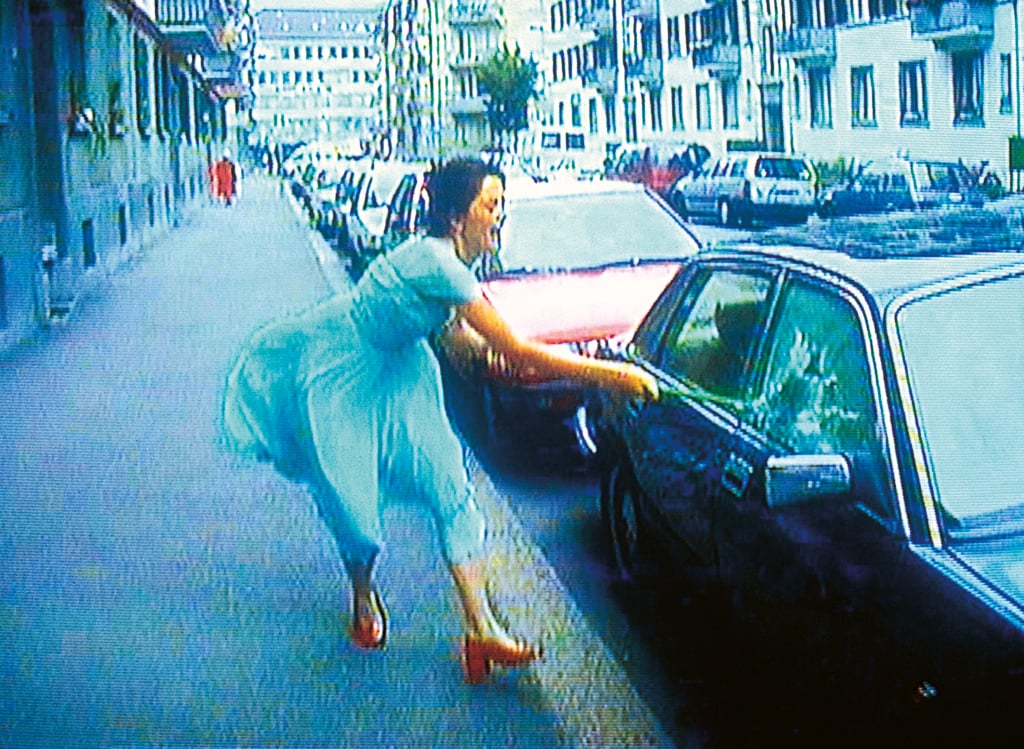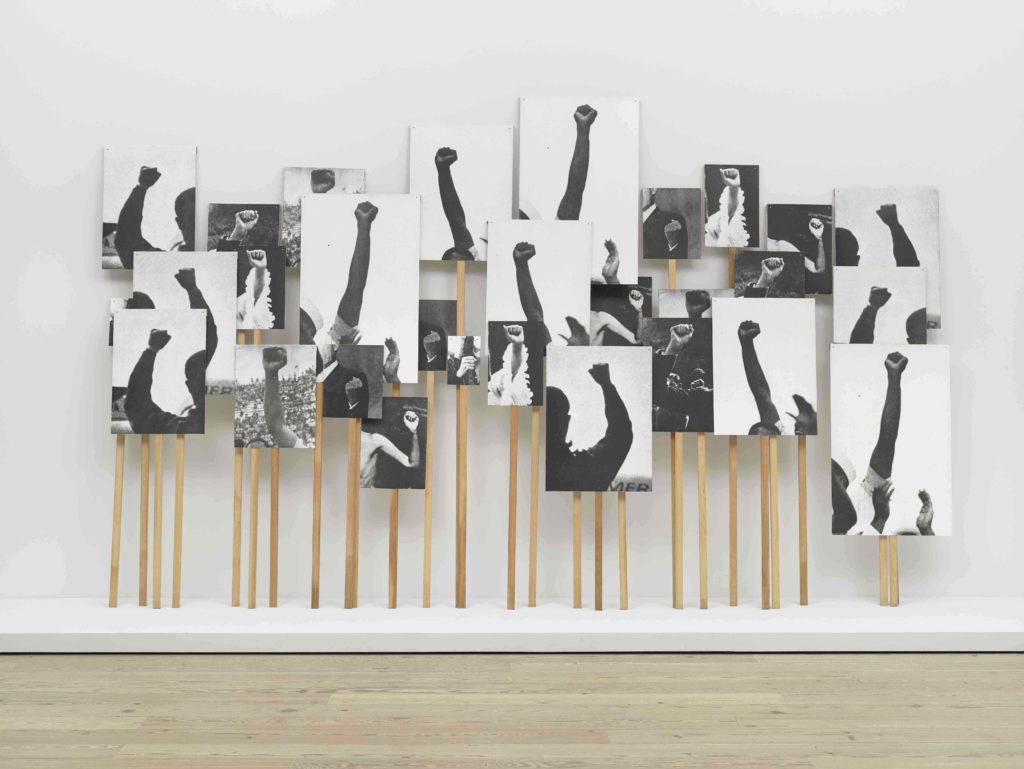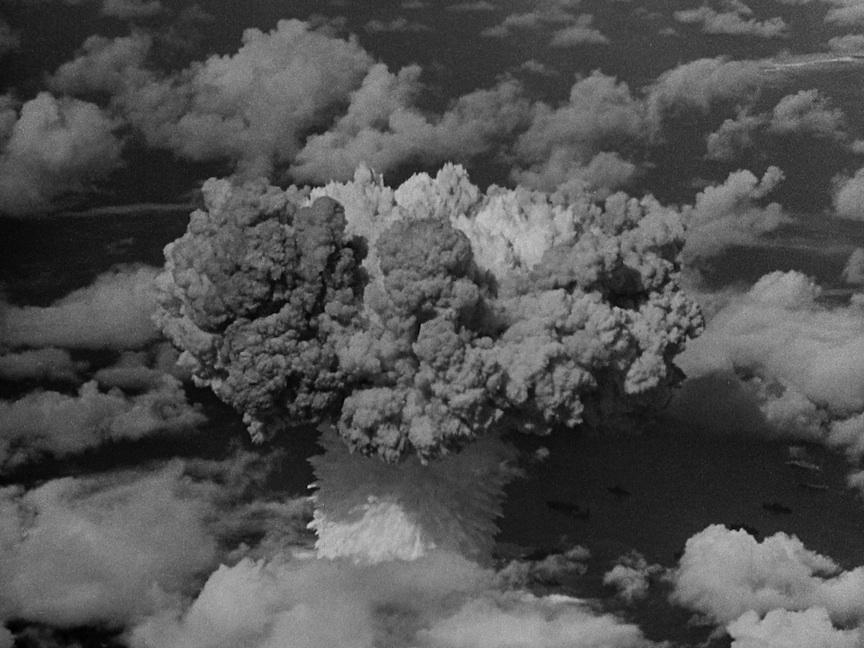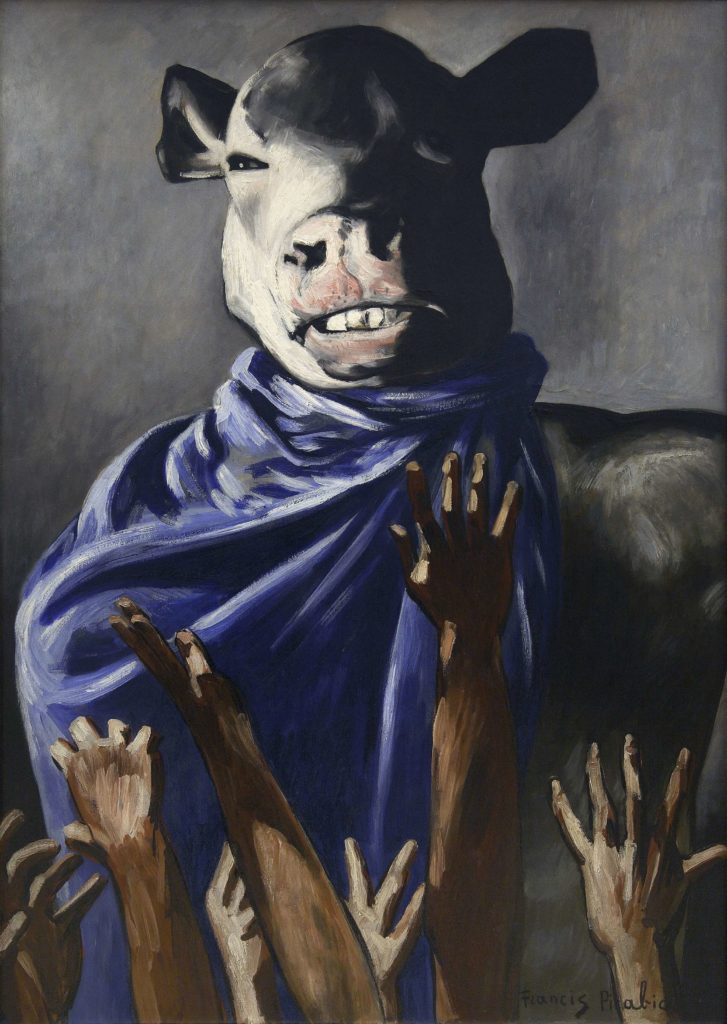Politics
How Donald Trump Has Hijacked Art
One thing is certain: the world looks different after Trump's election.

One thing is certain: the world looks different after Trump's election.

Christian Viveros-Fauné

In the wee hours of November 9, after the Electoral College conferred a once unthinkable presidential victory on Donald J. Trump, many New Yorkers got a familiar sinking feeling. It can be described thusly: down is up, up is down, the sun rises in the East and sets in the West, there are no rules. By the time Trump delivered his acceptance speech, social media was awash with comparisons of two recent American watersheds—11/9 and 9/11.
Whether the analogy—itself a mini-referendum on the authoritarian leanings of the president-elect—appears apt or overblown, one thing is certain: the world looks different after this election in ways that encompass things large and small. From the sudden midtown gridlock caused by heightened security around Trump Tower to the nation’s surge in hate crimes, the shocking results of the 2016 electoral process have altered both perception and reality.
Art of both old and recent vintages, of course, can’t help but also resemble the nation’s seismic shifts. Call it reality-based Baader-Meinhof syndrome—a fact-augmented species of what psychologists refer to as “the frequency illusion”—but a month after the presidential race was concluded it’s almost impossible not to read the election’s aftermath (or Trump’s own moonfaced mug) into many of the objects currently found inside New York’s museums. Here’s another way to explain this disorienting Trump-is-everywhere effect: art has been hijacked, along with the rest of the culture, by The Art of the Deal.

Annette Lemieux (b. 1957). Left Right Left Right, (1995).Thirty photolithographs and thirty pine poles, Dimensions variable. Whitney Museum of American Art, New York; Purchase, with funds from the Print Committee 2001.
Coined as an early internet meme in the mid-1990s, Baader-Meinhof syndrome describes the phenomenon where a concept or thing you’ve recently encountered—say, a klezmer-electro-punk band, or a once obscure word for white nationalism—suddenly pops up from around every corner of human experience. Consider, for instance, the terms “alt-right” and “identitarianism.” Weasel words for old hatreds that self-describe the views of millions of Trump supporters, both euphemisms have gained overnight omnipresence—thanks in part to subjective selective attention, but also to these concepts objective, real-world ubiquity. Call it confirmation bias with a comb-over.
But how exactly does Trumpian pervasiveness play out inside some of New York’s art museums? The answer is mostly “accidentally,” with the exception of one significant instance. This was when, a day after presidential voting wrapped up, artist Annette Lemieux deftly moved to change her 1995 photo-based work Left Right Left Right—at the Whitney Museum as part of the exhibition “Human Interest: Portraits from the Whitney’s Collection”— to reflect directly on the election.
An installation of thirty photographs of raised fists nailed to wooden poles—one fist belongs to Martin Luther King, Jr., another to an anonymous Woodstock concertgoer—the work was reinstalled upside down the following week, with its wooden stakes pointing upward and fists pointing vainly to the ground. The change was not just fitting, but poignant in its description of country ripped in two. No other artwork today communicates the despair of 65,790,019 American liberals as forcefully; ditto for the topsy-turvy universe where millions of white voters believe they are the primary victims of racial discrimination.

Bruce Conner (1933–2008). Frame enlargement from CROSSROADS, 1976.
35mm film transferred to video, black-and-white, sound; 37 min. Courtesy Conner Family Trust and Kohn Gallery, Los Angeles © Conner Family Trust
Elsewhere at New York’s art institutions, the myriad correspondences between America’s recent political transformation and the specific objects on display have, at times, managed to upend the ideas behind entire exhibitions or, at the very least, overshadow the aura of so-called autonomous artworks. At the Whitney’s sprawling film and video roundup “Dreamlands,” for instance, it’s harder than ever to entertain curator Chrissie Iles’ olde-timey distinction between non-linear, immersive cinema and traditional narratives. This proves especially so where whole galleries are handed over to stale conceptual one-liners and GoPro vanguardism.
What endures in the anxious brainpan, instead, are the few installations that marshal images and technology in ways that are frankly accessible, urgent or both. Among the worthy takeaways from this ambitious but self-referential show are the following gems: Alex da Corte’s Easternsports, a four-channel, synesthetic, soap-opera update of Thornton Wilder’s Our Town; and Bruce Conner’s 1975 frighteningly hypnotic mushroom cloud loop, Crossroads—the latter for obvious reasons.
Similarly, at the New Museum’s survey of thirty years of experimental video work by Swiss artist Pipilotti Rist, the beat goes on, if now accompanied by far less blissed-out treble. Lights, sights, and sounds continue to ebb and flow through several floors of Rist’s mesmerizing single-channel works and installations. But since last month the artist’s slippery, acid-washed images have acquired a new portentousness.

Pipilotti Rist Ever is Over All. Courtesy Phaidon/New Museum
As artnet News critic Ben Davis wrote in October, “the great theme of Rist’s unconventional feminist work has been living free of shame”—witness her 1997 video of a strolling gamine gleefully clubbing the windows of parked cars. But while shamelessness may be Rist’s forte, she’s also expert at conjuring up deep-seated existential dread. Vorstadthirn (Suburb Brain), her 1999 miniature video-sculpture of a family dinner in which the plates are on fire suggests the artist is keenly familiar with certain timely accelerators—fear and uncertainty. To paraphrase Kenneth Clark in Civilization, it was a surfeit of those feelings plus torch-it-all-down boredom that brought about the trashing of Rome and “the West’s darkest hour.”
At MoMA’s sixth floor galleries, don’t be put off by the billboard-sized Francis Picabia photo portrait that introduces the wild modernist’s survey to the American public (the show originated this summer at the Kunsthaus Zurich). There’s an odd physical resemblance between Picabia and the president-elect, but otherwise they’re chalk and cheese. Born a plutocrat, the French artist was a serial womanizer who spent his entire adult life blowing through the family fortune—not to erect tacky monuments to middlebrow ambition, mind you, but to subsidize inconsistency as a painting style.
Titled “Francis Picabia: Our Heads Are Round so Our Thoughts Can Change Direction,” MoMA’s exhibition traces the careening roller coaster ride that was Picabia’s career, but also includes—per our roundup of inadvertent museum Trumpabilia—a number of retrospectively premonitory pictures. Among these are The Adoration of the Calf, from 1941-42, which features the head of a cow placed above a sea of outstretched hands like a false idol (the museum wall text says the picture alludes to Hitler), as well as Portrait of a Woman, from 1935-37. The latter picture describes a dark-haired pinup with a violently pockmarked face. Not to get too weird, but William Butler Yeat’s famous phrase comes to mind: “a terrible beauty is born.”

L’adoration du veau, Picabia Francis (1879-1953). Paris, musée national d’Art moderne – Centre Georges Pompidou
As Jason Farago put in his exhibition review in the Guardian, Picabia was a self-described raté or “loser”—that bullying term Trump has trotted out via social media 243 times according to the Trump Twitter Archive—though the artist wore the label like an upside down badge of honor. But loser or no, Picabia eventually hit it big in the art historical sweepstakes. Trump, on the other hand… well, it’s too early to tell. Still, it’s hard if not impossible to imagine many accounts treating him well in the near or distant future—both in and out of New York’s distressingly evocative museums.